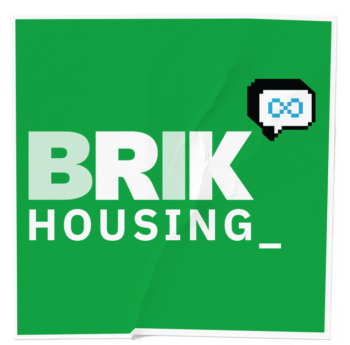BRIKHousing: Onboarding
Move from legacy to live with ease. Step-by-step onboarding supports data migration, setup, and training – with clear communication and expert guidance, powered by Microsoft Dynamics 365.
Simple. Clear. Designed for Housing
Moving away from a legacy housing system is no small task and it can feel really overwhelming. We wanted our onboarding process to feel easy and manageable, so nothing stands between you and innovation. Whether you’re rolling out one module or going for full digital overhaul, our modular approach breaks it down into logical steps and bring your team with us the whole way.
If you like to stay prepared with no surprises. This page explains exactly what happens during onboarding with BRIKHousing: including migration, setup, training and support.

Who’s involved in the project?
Every onboarding project is a partnership. During implementation, we see ourselves as an extension of your team where we work together with shared goals, open communication and clearly defined roles.
From your side:
- Project Sponsor – Your lead stakeholder and escalation point.
- Project Manager – Day-to-day coordination and delivery.
- IT Lead – Helps with technical setup and integrations.
- Data Lead – Oversees data extraction and migration.
- Business Analysts & SMEs – Provide insight into how your organisation works.
- End Users – Brought in at the right time to test and adopt.
From our side:
- Delivery Manager – Your primary contact for delivery and coordination.
- Functional & Technical Consultants – Responsible for configuration, development, and best-practice advice.
- Account Manager – Keeps everything on track and aligned to your bigger goals.
How we communicate_
Clear communication builds confidence which is crucial especially during moments of change. It’s important that teams are set up and everyone knows what they’re responsible for.
We’ll agree early on how often you want updates and who needs to be in the loop. The level and frequency of communication is completely tailored to each organisation but, typically, this includes:
- Weekly project meetings for the core delivery team
- Monthly steering meetings with exec sponsors
- Daily standups during busy phases (if your capacity allows)
- A dedicated Teams channel & shared SharePoint folder for day-to-day communication and documentation for the project team to communicate with one another
- Status updates and risk tracking through DevOps


Data migration and integration: the foundations_
Before we install your first module, we have to get the data right. It’s the backbone of your new system and it’s critical to the success of the project.
We’ll work with you to:
- Extract data from your existing housing system. Sometimes this can be achieved using an existing API which gives us everything we need, or by using connectors.
- Map and clean that data using our templates (person, property, tenancy, etc.)
- Set up a data repository if required
- Identify how and when data might need to be pushed back to the old system
- Agree on frequency and method for refreshes during the transition
One we’ve gotten the data migration working and sorted we can get started on your first module.

Deciding what to implement first_
You don’t have to do everything at once. In fact, we recommend starting simple and building momentum.
Together, we’ll help you decide what to roll out first, based on:
- Contract deadlines or pressure to decommission legacy systems
- Regulatory requirements
- Internal pain points (e.g. spreadsheets or manual workarounds)
- Opportunities to demonstrate quick wins
Most customers start with one or two core modules, such as complaints, repairs, or compliance and we build from there.

Every step of the onboarding process_
Once roles are defined and comms are in place, we begin the technical onboarding process. We’ve broken down the onboarding journey, step-by-step below;
1. Kick-off
We introduce the project team, walk through the plan and align on expectations.
2. Environment setup
We help you set up development and test environments, assign permissions, and install our core housing modules. At this time, we’ll be working closely with your data and start moving data from your existing legacy system into the new module.
3. Sprint planning
We begin with an initial sprint to configure and demonstrate your first module using a “Show and Tell” approach. This means we’ll be demonstrating the system with key users in your organisation.
4. Configuration and feedback
After the demos, we’ll collect your feedback about what needs to change and we configure, tweak, and align it to your processes until everyone’s happy.
5. User Acceptance Testing (UAT)
Your users test the system using your data in a safe sandbox environment. Issues are logged, fixed, and retested until everything’s smooth sailing.
6. Training
It’s important that teams are set up and everyone knows what their responsible for. We typically use a Train the Trainer model, backed by user guides and optional video content.
7. Go live
Once signed off, your solution is deployed into live. We stay close during go-live with a tailored HyperCare period (usually 1–2 weeks).
8. Rinse and repeat
We repeat the sprint cycle with your next chosen module — always informed by what we’ve learned along the way.
Security and Compliance. Built-in_
Because BRIKHousing is built on Microsoft Dynamics 365, enterprise-grade security comes as standard, including:
- Role-based access control
- Field-level security
- Single sign-on (SSO)
- Compliance with UK data protection standards
We’ll also work with your IT team to ensure everything meets your internal policies and governance expectations.

Frequently asked questions_
How long does onboarding typically take?
It depends on the number of modules, your internal resources, and how much tailoring is needed. But, most customers go live with their first module within 8–12 weeks.
Can we migrate gradually rather than all at once?
Yes and that’s usually what we recommend. Starting with a high-priority module allows for quicker benefits and reduced risk.
Do we need to assign full-time people to this project?
Not necessarily. We’ll help you assess resource needs based on your approach. Some roles (like data leads or SMEs) may only need to engage at specific points.
What support do we get after go-live?
After go-live, we provide a HyperCare period with extra support, followed by a handover to our dedicated support team.
Can we tailor modules to our processes?
Yes, although we always suggest starting with out-of-the-box and adjusting only where it adds real value. That way, you avoid unnecessary delays and complexity.
How do Housing Associations choose which module to implement first?
There are several reasons why a particular module might be chosen to go first and it often comes down to where the pressure or opportunity lies.
Some organisations start with a module that’s less connected to their existing housing system. That way, it’s easier to get up and running quickly and show early progress to the wider team.
Others are driven by deadlines; for example, needing to switch off a legacy system when a contract ends, especially for something like compliance.
In some cases, a module is prioritised because the current process is seriously halting progress, whether due to system issues or pressure from the regulator to improve performance.
And sometimes it’s about risk. If a process is being managed manually or across spreadsheets, that’s often the trigger to tackle it first.
Ready to modernise your housing system?
Our onboarding approach is built to guide you every step of the way with clarity, care, and practical support.
Let’s talk about your first module.